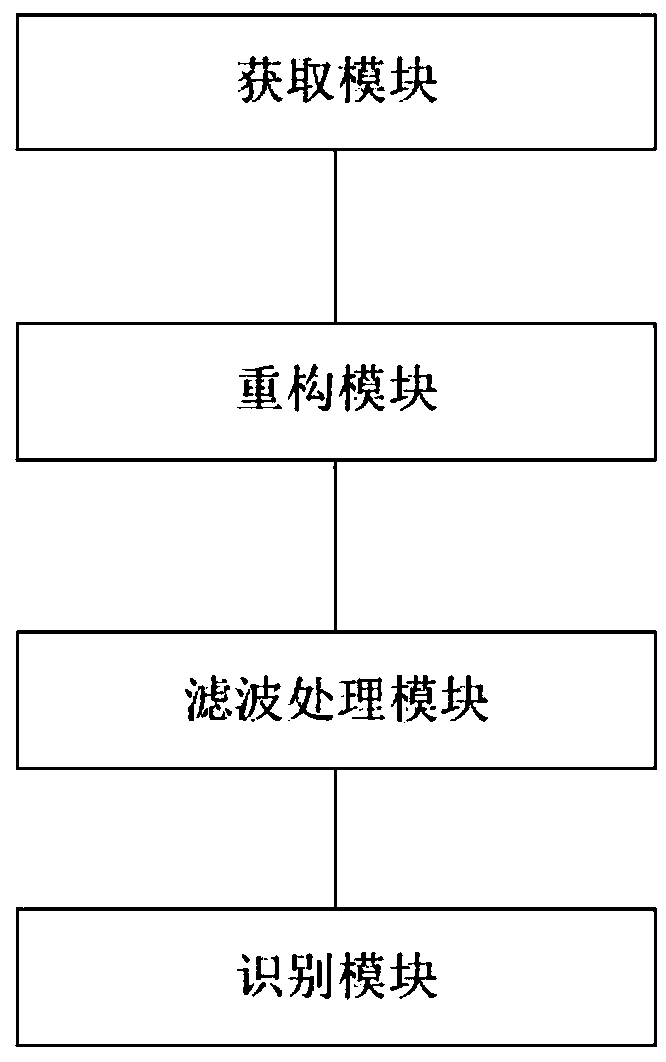Method and system for target recognition by laser composite imaging
A composite imaging and target recognition technology, applied in the field of target recognition, can solve the problems of complex stitching algorithm, susceptibility to electromagnetic interference, spatial resolution and distance resolution (poor image quality, etc.)
- Summary
- Abstract
- Description
- Claims
- Application Information
AI Technical Summary
Problems solved by technology
Method used
Image
Examples
Embodiment 1
[0064] Such as figure 1 , 2 As shown in and 5, an embodiment of the present invention provides a method for target recognition using laser composite imaging, including:
[0065] S101, acquiring range images, intensity images, azimuth angles and elevation angles of each point of the target through laser composite imaging;
[0066] S102, performing three-dimensional point cloud data reconstruction on the range image, intensity image, azimuth angle, and elevation angle to obtain three-dimensional point cloud data, where the three-dimensional point cloud data includes the amplitude, height, shape, spectrum, and scattering information of the target;
[0067] S103. Perform filtering processing on the 3D point cloud data, specifically including:
[0068] S104, estimate the size, shape, height, distance, scattering and physical characteristic parameters of the surface layer of the target through mathematical multi-dimensional space transformation, and finally according to the discri...
Embodiment 2
[0111] Such as image 3 with 4 As shown, an embodiment of the present invention provides a system for target recognition using laser composite imaging, including:
[0112] The acquisition module is used to acquire the distance image, intensity image, azimuth angle and elevation angle of each point of the target through laser composite imaging;
[0113] The reconstruction module performs three-dimensional point cloud data reconstruction on the range image, intensity image, azimuth angle and pitch angle to obtain three-dimensional point cloud data, and the three-dimensional point cloud data includes the amplitude, height, shape, spectrum and scattering information of the target;
[0114] The filtering processing module is used to perform filtering processing on the three-dimensional point cloud data;
[0115] The identification module estimates the size, shape, height, distance, scattering and physical characteristic parameters of the surface layer through mathematical multi-d...
PUM
 Login to View More
Login to View More Abstract
Description
Claims
Application Information
 Login to View More
Login to View More - R&D
- Intellectual Property
- Life Sciences
- Materials
- Tech Scout
- Unparalleled Data Quality
- Higher Quality Content
- 60% Fewer Hallucinations
Browse by: Latest US Patents, China's latest patents, Technical Efficacy Thesaurus, Application Domain, Technology Topic, Popular Technical Reports.
© 2025 PatSnap. All rights reserved.Legal|Privacy policy|Modern Slavery Act Transparency Statement|Sitemap|About US| Contact US: help@patsnap.com



